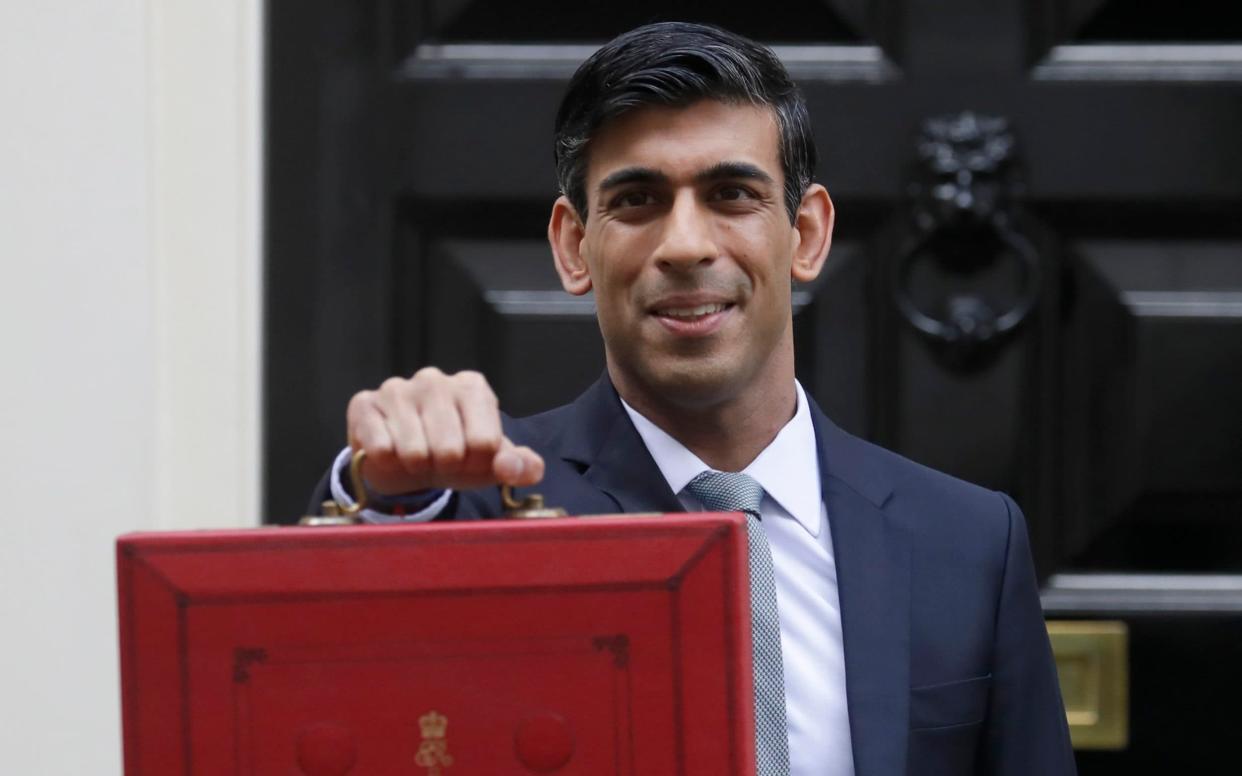£500bn of borrowing will loom over the economy for decades, IFS warns

The Treasury is set to borrow half a trillion pounds over two years as the cost of battling the coronavirus and lockdown recession mounts.
This year’s deficit will come in at about £350bn, according to the Institute for Fiscal Studies - a record for any peacetime year.
It will fall by more than half to £150bn next year, the analysts estimate, which still almost matches the £158bn borrowed at the peak of the financial crisis.
This debt mountain will pose a challenge to Rishi Sunak and his successors as Chancellor for many decades to come as a result.
Carl Emmerson, of the IFS, said: “What is clear is that we are going to borrow more as a share of GDP than we did at the peak of the financial crisis, and the UK will borrow more as a share of GDP than it ever has done in the last 300 years outside of the two world wars.
“Managing that elevated debt will be a task not just for the current Chancellor but also many of his successors. It is going to take decades before we manage that back down to the levels we were used to pre this crisis.”
The extra spending and tax cuts include the latest £30bn package announced by Mr Sunak.
This includes a bonus for businesses that take back furloughed staff,which could amount to more than £9bn; a cut to VAT for the hospitality industry with a value of £4.1bn; lower stamp duty in the form of raising the threshold to £500,000 which amounts to almost £4bn of taxes; and a green homes grant of £2bn.
A similar stamp duty freeze helped drive up transactions in the wake of the financial crisis, the IFS said.
The Chancellor also disclosed an extra £33bn of spending on public services since March on top of that previously publicised, with most going to the NHS.
In a detailed analysis of the plans, the IFS said that an extra £31.9bn has already been spent on the NHS since the Budget. On top of that, almost £5bn has gone to local government and social care, just over £5bn for public transport, £1.2bn for schools and £4.1bn for the Scottish, Welsh and Northern Irish adminstrations.
The IFS said the furlough figures highlight the serious effect of the pandemic and lockdown on the younger generation, with more than 40pc of under-25 year olds either furloughed or not working.
By contrast, only around one-quarter of 35 to 54-yearpolds are in the same position.
This is one reason for the extra training and apprenticeship grants offered to younger workers - though the analysts added that life will also be tough for older people, as those approaching the state retirement age often struggle to get back into work once they have lost their jobs.
On top of that, their savings and investments for retirement could be at risk from turmoil in financial markets.

Borrowing on a grand scale is affordable right now because interest rates are at rock bottom. The Government has issued several bonds at negative interest rates, meaning investors will get back less money than they loaned the Treasury.
Mr Emmerson said: “At the moment the Government is borrowing incredibly cheaply. We think debt interest spending over the next few years is likely to be lower than we thought in March. Despite the extra borrowing the reduction in interest rates more than outweighs that.
“What that means is, if you can borrow money and spend it well, in ways that mean the economy will recover more strongly, then that borrowing is almost certainly likely to be worthwhile.”
However, low rates are not guaranteed to continue forever, posing a serious potential risk to the state’s financial health in future.
Mr Sunak said he intends to focus on stabilising the public finances in the coming years, but has given little detail on the form that might take.

The IFS anticipates tax hikes will be on the way.
Mr Emmerson said: “Once we are through the crisis phase, once the economy has established its new normal, we are probably going to find that the economy is not as big as what it would have been had the coronavirus never hit.
“If that is the case, revenues will still be depressed and if we want then to bring the deficit back to where it would have been absent the crisis, we will need to do some spending cuts, or given a decade of austerity, perhaps more likely some tax rises.”
Just keeping the national debt-to-GDP ratio stable is likely to take £35bn to £40bn of tax hikes, or 1.5pc of GDP, he said, even before getting on to extra spending for the NHS.
That is the equivalent to as much as an extra 7p on the basic 20pc rate of income tax, according to the HMRC formula.
Such a move would add more than £100 per month to the tax bill of an average full-time employee, underlining the scale of the financial challenge ahead.


